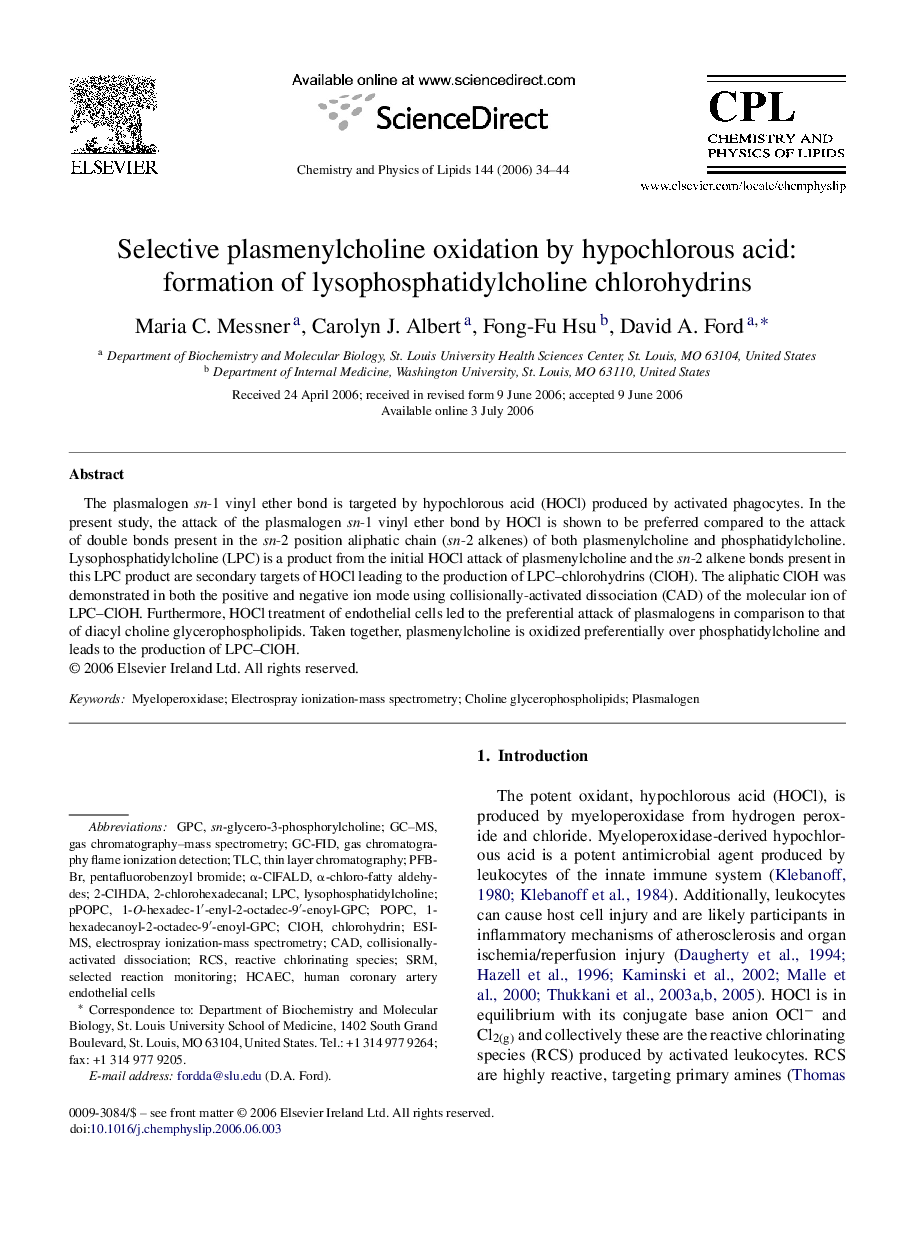| Article ID | Journal | Published Year | Pages | File Type |
|---|---|---|---|---|
| 1252717 | Chemistry and Physics of Lipids | 2006 | 11 Pages |
Abstract
The plasmalogen sn-1 vinyl ether bond is targeted by hypochlorous acid (HOCl) produced by activated phagocytes. In the present study, the attack of the plasmalogen sn-1 vinyl ether bond by HOCl is shown to be preferred compared to the attack of double bonds present in the sn-2 position aliphatic chain (sn-2 alkenes) of both plasmenylcholine and phosphatidylcholine. Lysophosphatidylcholine (LPC) is a product from the initial HOCl attack of plasmenylcholine and the sn-2 alkene bonds present in this LPC product are secondary targets of HOCl leading to the production of LPC-chlorohydrins (ClOH). The aliphatic ClOH was demonstrated in both the positive and negative ion mode using collisionally-activated dissociation (CAD) of the molecular ion of LPC-ClOH. Furthermore, HOCl treatment of endothelial cells led to the preferential attack of plasmalogens in comparison to that of diacyl choline glycerophospholipids. Taken together, plasmenylcholine is oxidized preferentially over phosphatidylcholine and leads to the production of LPC-ClOH.
Keywords
SRMCholine glycerophospholipidsESI-MSTLCHCAECRCSGC-FIDGPCLPCPlasmalogenPoPCGC–MShuman coronary artery endothelial cellsCADgas chromatography–mass spectrometryElectrospray ionization-mass spectrometryLysophosphatidylcholinemyeloperoxidaseselected reaction monitoringthin layer chromatographyChlorohydrin
Related Topics
Physical Sciences and Engineering
Chemistry
Chemistry (General)
Authors
Maria C. Messner, Carolyn J. Albert, Fong-Fu Hsu, David A. Ford,
